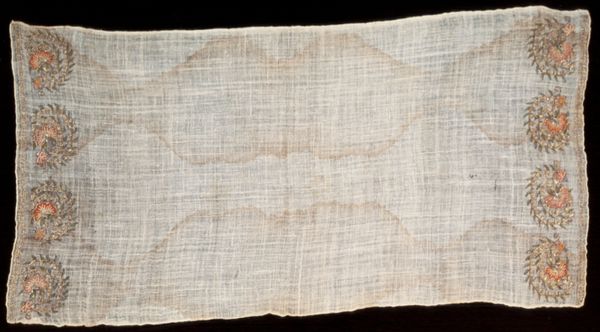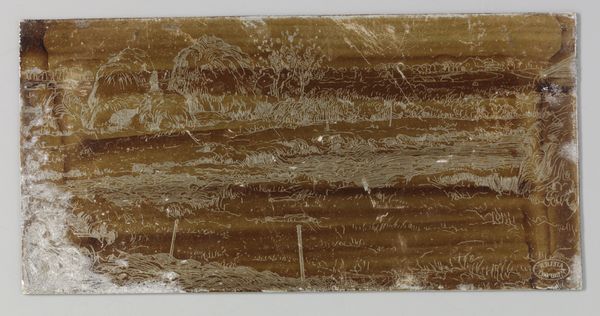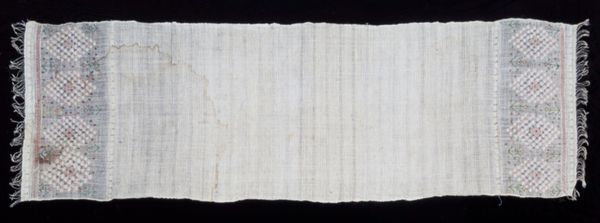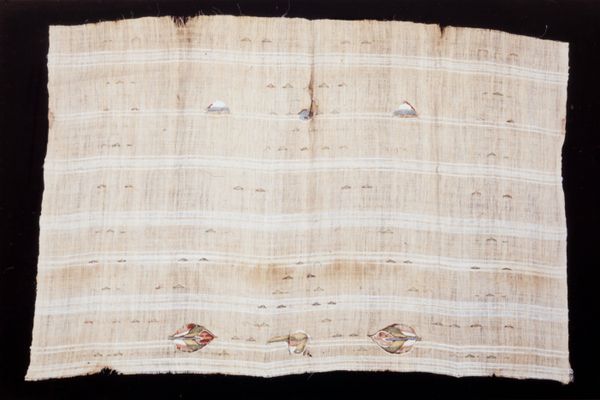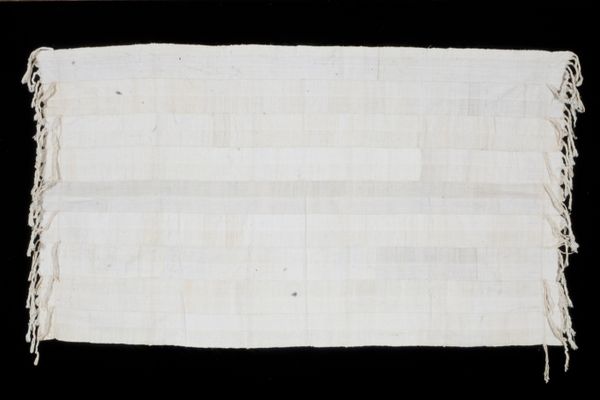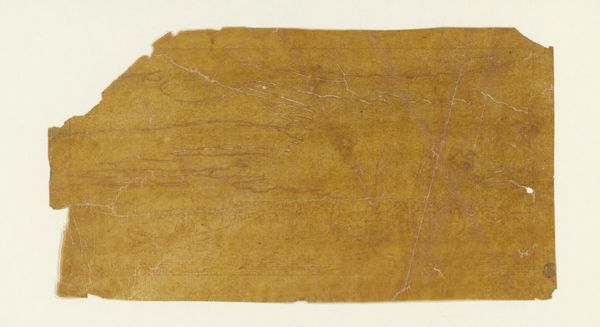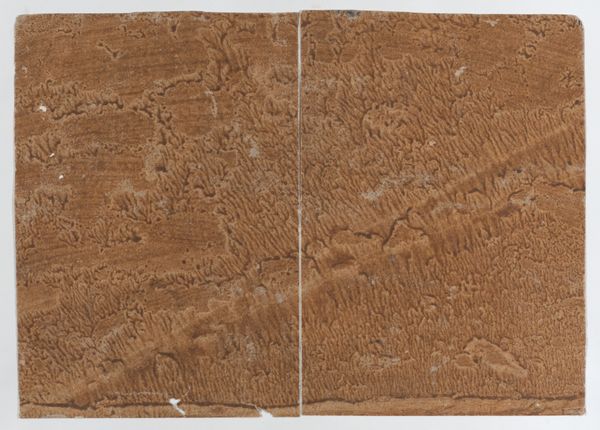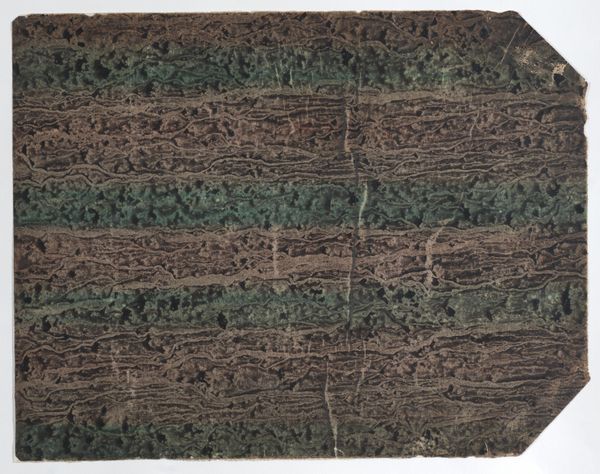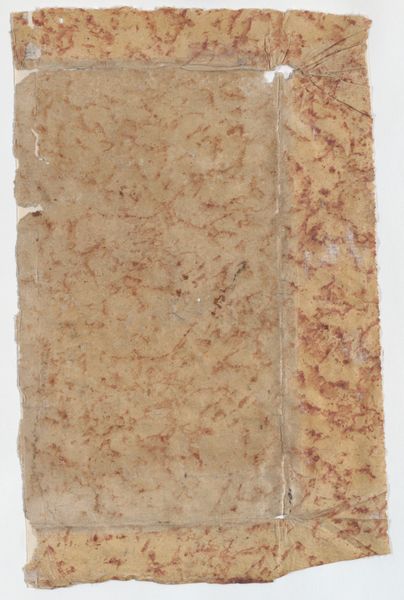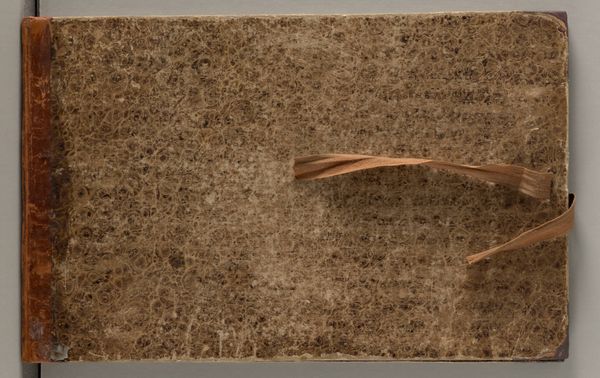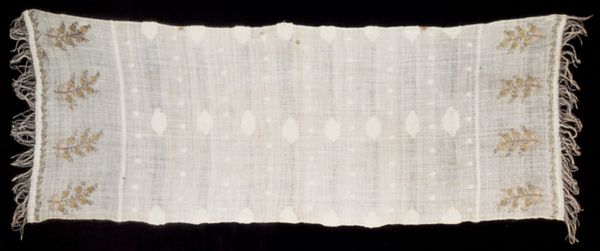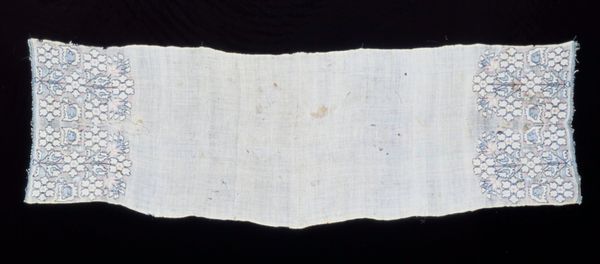
print, paper
# print
#
paper
#
geometric
#
line
Dimensions: Sheet: 8 7/8 × 5 1/2 in. (22.6 × 14 cm)
Copyright: Public Domain
Curator: Welcome. We're standing before an intriguing piece from the Metropolitan Museum of Art's collection: an "Orange Striped Paste Paper," created anonymously sometime between 1800 and 1900. It's a compelling example of printmaking on paper. Editor: My immediate reaction? Serenity, oddly. The warm oranges and repetitive lines have a very calming effect. The varying widths of the lines and imperfections, however, gives a handmade quality and prevent it from becoming too sterile. Curator: That sense of the handmade is key. Paste paper techniques were often employed for decorative purposes, endpapers in books, or lining drawers. The act of creating these papers was often more integrated into everyday life. Consider its potential use: it democratized visual art for everyday consumption. Editor: And if we delve into its structure, that’s clear. Note the composition: primarily horizontal lines of alternating color weights. The orange isn't flat but striated, creating a visual texture, it’s like looking at grain. And the edges themselves contribute a rawness to the finished artifact. Curator: Indeed. And while anonymous, the existence of such a work gives us insight into the culture of the era. The piece speaks to a growing interest in accessible, patterned designs that brought beauty to the domestic sphere for the common person. These sorts of geometric patterned art pieces found their role in larger interior design trends. Editor: I'm interested in that point about "domestic." It really speaks to the intimate scale here; it's made for closer observation. In terms of the formal language of design, there’s an honesty here. There is an immediate directness and almost simplistic appeal. The lines and coloration build this sense of simple form and depth. Curator: So while this piece may not command the same attention as grand history paintings, it is invaluable to consider that objects such as "Orange Striped Paste Paper," give voice to overlooked traditions and forgotten hands. It’s evidence of the broader patterns of aesthetic development that make our cultural tapestry so rich. Editor: Ultimately, analyzing the piece highlights how simplicity in structure can communicate elegance and quiet beauty. I was truly moved by the intimacy it radiates.
Comments
No comments
Be the first to comment and join the conversation on the ultimate creative platform.

